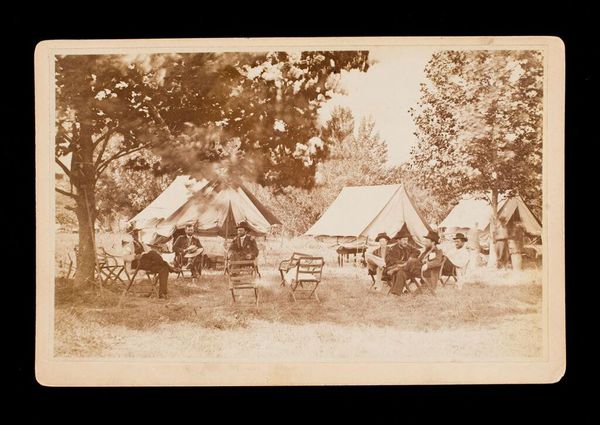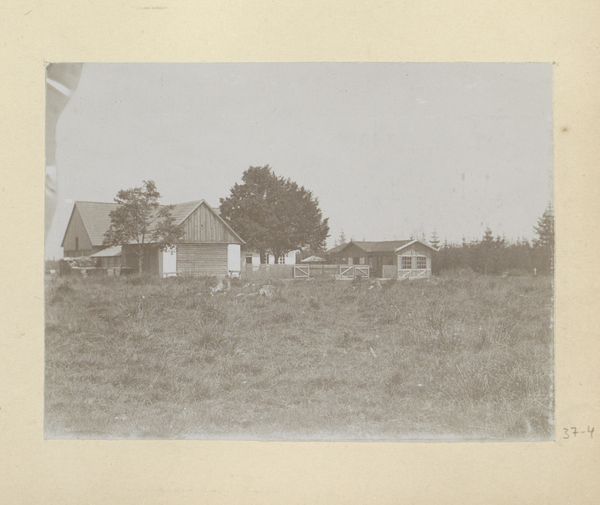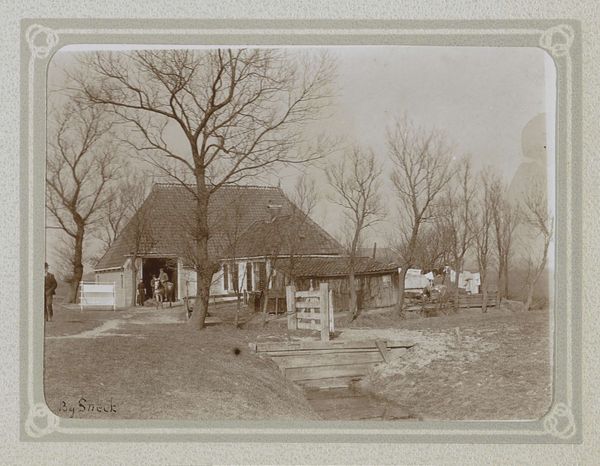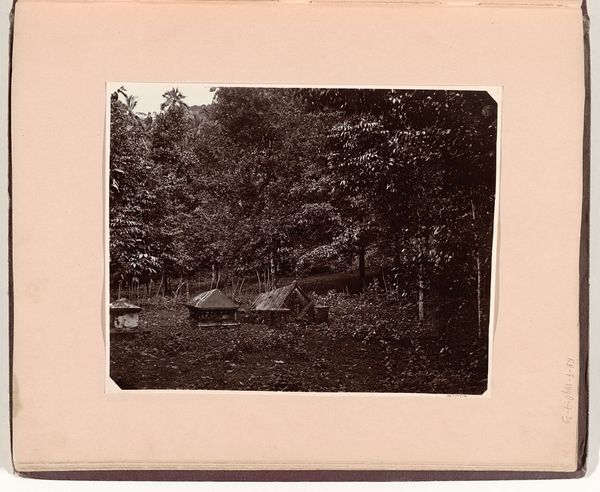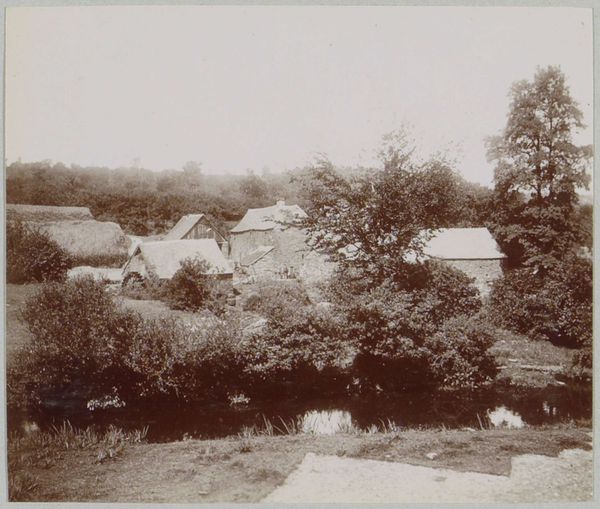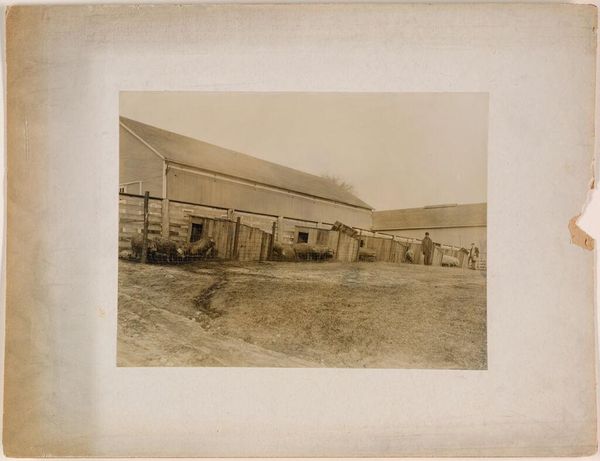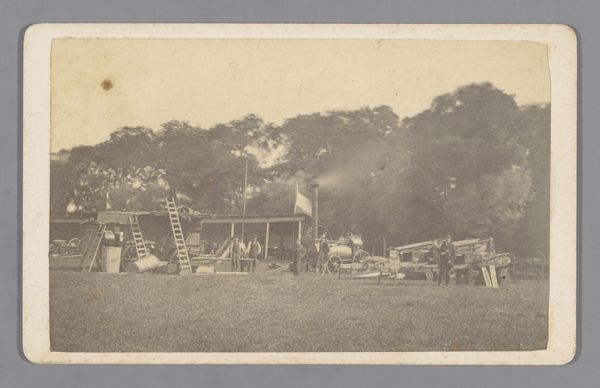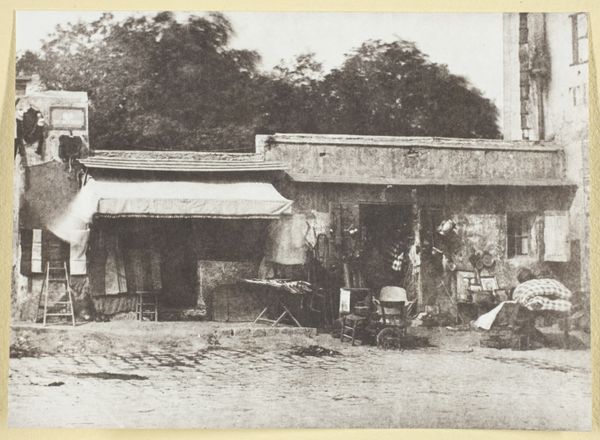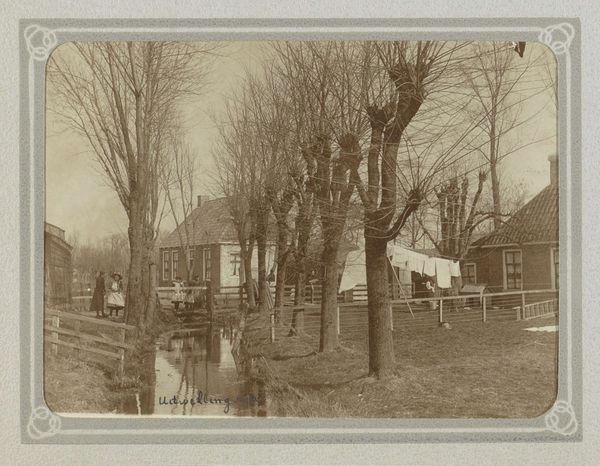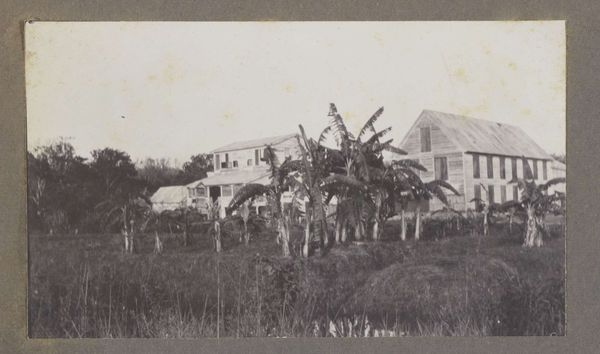
Dimensions: height 81 mm, width 110 mm
Copyright: Rijks Museum: Open Domain
Curator: Folkert Idzes de Jong captured this gelatin-silver print, “Boerderij met een erf in Beek (Gelderland)”, sometime between 1905 and 1907. It presents a farmhouse nestled within a rural landscape. Editor: It's quite idyllic. There's something deeply calming about this scene; a simple farmstead shrouded by trees and foliage. It evokes a strong sense of peaceful self-sufficiency. Curator: The photograph is demonstrative of naturalism. Observe the soft tonal gradations characteristic of photographic impressionism, giving it that ethereal, almost painterly quality. The artist emphasizes the play of light and shadow, capturing the serene ambience. Editor: It makes me consider the romanticism surrounding rural life at the time. Was this the reality for those who lived in Beek, or was it more nuanced and complex? The photographic stillness somehow seems staged, curated almost, not fully honest. Curator: That's an astute observation. While on the surface it presents an idealized version of agrarian existence, understanding this image through the lens of social history necessitates exploring the context of early 20th century Netherlands. Many Dutch photographers at this time actively sought to define Dutchness as profoundly agrarian, but we must question whose Dutchness was validated in these types of images. Editor: Right. Whose narrative gets centered? The silent workers and laborers who maintained this lifestyle are absent here. This is about an imagined way of life that perhaps not everyone had access to or benefit from. Also, it would be compelling to examine this imagery alongside urbanization—does the image invite rural fantasy, even escapism? Curator: It certainly begs deeper analysis to dissect this rural imagery in terms of its public and even political role. Despite its inherent simplicity, this piece reflects much larger socio-political constructs and can offer insight into Dutch cultural history. Editor: Indeed. By encouraging dialogue between art history and contemporary theory, situating images like “Boerderij met een erf in Beek” within larger intersectional narratives is essential for a deeper, more comprehensive understanding. Curator: Thank you, your contextual insights regarding this photograph reveal precisely why further examination is paramount. Editor: My pleasure. It’s vital to continuously question the historical representation of seemingly quotidian moments.
Comments
No comments
Be the first to comment and join the conversation on the ultimate creative platform.
